INSTITUT SUPERIEUR D'ANTHROPOLOGIE
INSTITUTE OF ANTHROPOLOGY
ONLINE COURSES / COURS A DISTANCE
SUMMER TERM : JULY 2014
REGISTER NOW
FRANCE – 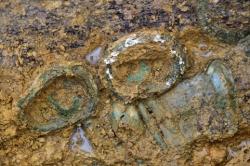 Warcq - La Cellule départementale d’archéologie mène conjointement avec l’Inrap (Institut national de recherches archéologiques préventives) des fouilles sur le chantier de l’A304 à Warcq. Après la découverte de plusieurs sites gallo-romains, c’est maintenant une tombe à char qui est actuellement mise à jour par le travail des archéologues. Pratique courante entre le Ve et le IVe siècle avant notre ère, les élites de l’époque se faisaient ensevelir sur un char à deux roues, entourés d’objets quotidiens dont ils se servaient. Si diverses tombes à char sont déjà recensées dans la région, il s’agit de la première découverte de cette nature dans le nord des Ardennes. La présence d’eau a permis une bonne conservation de la structure en bois de la chambre funéraire, qui semble également avoir été épargnée par les pillages. Des objets en bronze ainsi qu’un objet, encore non identifié, recouvert d’une feuille d’or occupent actuellement l’attention des archéologues. Tous ces éléments viennent appuyer la thèse d’une découverte à caractère exceptionnel pour le monde celte. Les fouilles se poursuivant sur quelques semaines, le site devrait encore livrer de belles surprises !
Warcq - La Cellule départementale d’archéologie mène conjointement avec l’Inrap (Institut national de recherches archéologiques préventives) des fouilles sur le chantier de l’A304 à Warcq. Après la découverte de plusieurs sites gallo-romains, c’est maintenant une tombe à char qui est actuellement mise à jour par le travail des archéologues. Pratique courante entre le Ve et le IVe siècle avant notre ère, les élites de l’époque se faisaient ensevelir sur un char à deux roues, entourés d’objets quotidiens dont ils se servaient. Si diverses tombes à char sont déjà recensées dans la région, il s’agit de la première découverte de cette nature dans le nord des Ardennes. La présence d’eau a permis une bonne conservation de la structure en bois de la chambre funéraire, qui semble également avoir été épargnée par les pillages. Des objets en bronze ainsi qu’un objet, encore non identifié, recouvert d’une feuille d’or occupent actuellement l’attention des archéologues. Tous ces éléments viennent appuyer la thèse d’une découverte à caractère exceptionnel pour le monde celte. Les fouilles se poursuivant sur quelques semaines, le site devrait encore livrer de belles surprises !
http://www.cg08.fr/articles/la-premiere-tombe-a-char-deterree-dans-les-ardennes
TURQUIE – 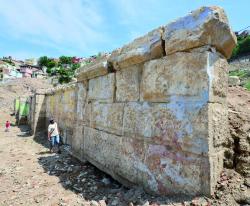
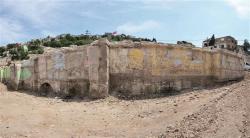 Izmir - The stage walls and entrance of a Roman-era amphitheater in İzmir’s Kadifekale neighborhood, once covered by expropriated shanty houses, have been unearthed due to the efforts of the İzmir Metropolitan Municipality. The municipality has issued an order of expropriation on a 12,900-squaremeter area to unearth the ruins of the amphitheater.The most comprehensive information about the ancient theater in Kadifekale can be obtained in the studies of Austrian architects and archaeologists Otto Berg and Otto Walter, who conducted studies in the region in 1917 and 1918, from their plans and drawings. The remains of the theater, which is thought to have held a capacity of 16,000 people, has characteristics of the Roman era according to many researchers, the study reports. Ancient resources claim Saint Polycarp from İzmir was killed in this theater during the early ages of Christianity, namely the paganism period of the Roman era, suggesting the theater has witnessed some tragic events in history.
Izmir - The stage walls and entrance of a Roman-era amphitheater in İzmir’s Kadifekale neighborhood, once covered by expropriated shanty houses, have been unearthed due to the efforts of the İzmir Metropolitan Municipality. The municipality has issued an order of expropriation on a 12,900-squaremeter area to unearth the ruins of the amphitheater.The most comprehensive information about the ancient theater in Kadifekale can be obtained in the studies of Austrian architects and archaeologists Otto Berg and Otto Walter, who conducted studies in the region in 1917 and 1918, from their plans and drawings. The remains of the theater, which is thought to have held a capacity of 16,000 people, has characteristics of the Roman era according to many researchers, the study reports. Ancient resources claim Saint Polycarp from İzmir was killed in this theater during the early ages of Christianity, namely the paganism period of the Roman era, suggesting the theater has witnessed some tragic events in history.
http://www.hurriyetdailynews.com/demolitions-reveal-ancient-roman-theater.aspx?pageID=238&nid=68118&NewsCatID=375
SUISSE – 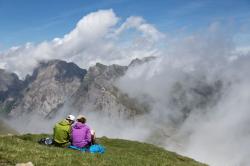 Alpes - Swiss scientists are urging alpinists and hikers to keep an eye out this summer for lost items in melting ice patches — items lost hundreds or even thousands of years ago. A project run by a Swiss cultural institute and a graduate student in the canton (state) of Graubuenden aims to gather artifacts trapped long ago in glaciers — finds that are now turning up with more frequency due to a warming planet. The project — the brainchild of Leandra Naef, who has a master's degree in prehistoric archaeology from the University of Zurich — encourages people to turn over things like wood or clothing they might run across in eastern Switzerland where the Swiss National Park is located. In recent decades mountaineers have found everything from goat skin leggings in the Swiss Alps to a corpse in the melting ice of South Tyrol, each about 5,000 years old. According to the institute and her published research, Naef focused the most promising possibilities down to about 300 sites that are 2,500 meters (8,200 feet) high or more. She then prioritized them by how often they might have been used by past mountain travelers. Some of the sites she will try to explore herself, but for most she will rely on the alert eyes of other climbers and hikers, asking them to report any finds to Swiss Alpine Club huts. The institute is sponsoring the project through the end of 2015 in hopes of cataloging the most promising sites for archaeologists to explore further.
Alpes - Swiss scientists are urging alpinists and hikers to keep an eye out this summer for lost items in melting ice patches — items lost hundreds or even thousands of years ago. A project run by a Swiss cultural institute and a graduate student in the canton (state) of Graubuenden aims to gather artifacts trapped long ago in glaciers — finds that are now turning up with more frequency due to a warming planet. The project — the brainchild of Leandra Naef, who has a master's degree in prehistoric archaeology from the University of Zurich — encourages people to turn over things like wood or clothing they might run across in eastern Switzerland where the Swiss National Park is located. In recent decades mountaineers have found everything from goat skin leggings in the Swiss Alps to a corpse in the melting ice of South Tyrol, each about 5,000 years old. According to the institute and her published research, Naef focused the most promising possibilities down to about 300 sites that are 2,500 meters (8,200 feet) high or more. She then prioritized them by how often they might have been used by past mountain travelers. Some of the sites she will try to explore herself, but for most she will rely on the alert eyes of other climbers and hikers, asking them to report any finds to Swiss Alpine Club huts. The institute is sponsoring the project through the end of 2015 in hopes of cataloging the most promising sites for archaeologists to explore further.
http://www.therepublic.com/view/story/a15fb002be054ae7bc2f9879ee2216cc/EU--Switzerland-Ice-Artifacts
TURQUIE –  Pergame - Bergama, the site of a world-famous ancient city in the Aegean province of İzmir, and the Cumalıkazık village in northwestern Bursa, have both welcomed a UNESCO decision putting the two spots on the prestigious World Heritage List. After the Persian and Lydian reign, the city came under the sway of Alexander the Great in 333 BC and became one of the outstanding trading and cultural centers of the Hellenistic period since 283 B.C. During the rule of Eumenes II [197-159 BC] the Pergamon acropolis was adorned with the finest buildings, whereas the city became one of the most important centers of culture, architecture and sculptures in the Hellenistic World.The city continued to be an important center in Roman times, as it was the center of the diocese during Byzantine times. The most remarkable monuments of the site are undoubtedly the Asklepion, located in the southwest of the town of Bergama; the Acropol or “upper city” situated on a hill of 300 meters, a middle city or “Roman city,” the Temple of Serapis (Red Courtyard) dated back to the 2nd A.D and the historic fabric with an organic form, including Turkish-Islamic art like mosques, madrasas, khans, bazaars and baths with many traditional houses. The Acropolis is the site where the settlement first began in Pergamon. The main structures located in the Acropolis are the Temple of Athena, Temple of Dionysos, Temple of Agora, Zeus Altar, theatre for with a 10,000-capacity for audiences, library, heroon, palaces, arsenals, upper agora, stoas, propylon and the remains of some Hellenistic houses. Asklepion, which was the healing center of the ancient time, signifies the term of the Place of Asklepios, who is one of Apollon’s sons and is the God of healing and medicine. According to the ancient historian Pausanias, Pergamum Asklepion was built in the first half of 4th BC in a place called Ayvazali today and operated until the 4th AD. It was also stated by the ancient historians that the healing cult was brought to Pergamum in the mid of 5th BC by Arkhias, who is the son of Aristakhminos from Pergamum. The city continued to be an important center in Roman times, as it was the center of the diocese during Byzantine times. The most remarkable monuments of the site are undoubtedly the Asklepion, located in thesouthwest of the town of Bergama; the Acropol or “upper city” situated on a hill of 300 meters, a middle city or “Roman city,” the Temple of Serapis (Red Courtyard) dated back to the 2nd A.D and the historic fabric with an organic form, including Turkish-Islamic art like mosques, madrasas, khans, bazaars and baths with many traditional houses. The Acropolis is the site where the settlement first began in Pergamon. The main structures located in the Acropolis are the Temple of Athena, Temple of Dionysos, Temple of Agora, Zeus Altar, theatre for with a 10,000-capacity for audiences, library, heroon, palaces, arsenals, upper agora, stoas, propylon and the remains of some Hellenistic houses. Asklepion, which was the healing center of the ancient time, signifies the term of the Place of Asklepios, who is one of Apollon’s sons and is the God of healing and medicine. According to the ancient historian Pausanias, Pergamum Asklepion was built in the first half of 4th BC in a place called Ayvazali today and operated until the 4th AD. It was also stated by the ancient historians that the healing cult was brought to Pergamum in the mid of 5th BC by Arkhias, who is the son of Aristakhminos from Pergamum.
Pergame - Bergama, the site of a world-famous ancient city in the Aegean province of İzmir, and the Cumalıkazık village in northwestern Bursa, have both welcomed a UNESCO decision putting the two spots on the prestigious World Heritage List. After the Persian and Lydian reign, the city came under the sway of Alexander the Great in 333 BC and became one of the outstanding trading and cultural centers of the Hellenistic period since 283 B.C. During the rule of Eumenes II [197-159 BC] the Pergamon acropolis was adorned with the finest buildings, whereas the city became one of the most important centers of culture, architecture and sculptures in the Hellenistic World.The city continued to be an important center in Roman times, as it was the center of the diocese during Byzantine times. The most remarkable monuments of the site are undoubtedly the Asklepion, located in the southwest of the town of Bergama; the Acropol or “upper city” situated on a hill of 300 meters, a middle city or “Roman city,” the Temple of Serapis (Red Courtyard) dated back to the 2nd A.D and the historic fabric with an organic form, including Turkish-Islamic art like mosques, madrasas, khans, bazaars and baths with many traditional houses. The Acropolis is the site where the settlement first began in Pergamon. The main structures located in the Acropolis are the Temple of Athena, Temple of Dionysos, Temple of Agora, Zeus Altar, theatre for with a 10,000-capacity for audiences, library, heroon, palaces, arsenals, upper agora, stoas, propylon and the remains of some Hellenistic houses. Asklepion, which was the healing center of the ancient time, signifies the term of the Place of Asklepios, who is one of Apollon’s sons and is the God of healing and medicine. According to the ancient historian Pausanias, Pergamum Asklepion was built in the first half of 4th BC in a place called Ayvazali today and operated until the 4th AD. It was also stated by the ancient historians that the healing cult was brought to Pergamum in the mid of 5th BC by Arkhias, who is the son of Aristakhminos from Pergamum. The city continued to be an important center in Roman times, as it was the center of the diocese during Byzantine times. The most remarkable monuments of the site are undoubtedly the Asklepion, located in thesouthwest of the town of Bergama; the Acropol or “upper city” situated on a hill of 300 meters, a middle city or “Roman city,” the Temple of Serapis (Red Courtyard) dated back to the 2nd A.D and the historic fabric with an organic form, including Turkish-Islamic art like mosques, madrasas, khans, bazaars and baths with many traditional houses. The Acropolis is the site where the settlement first began in Pergamon. The main structures located in the Acropolis are the Temple of Athena, Temple of Dionysos, Temple of Agora, Zeus Altar, theatre for with a 10,000-capacity for audiences, library, heroon, palaces, arsenals, upper agora, stoas, propylon and the remains of some Hellenistic houses. Asklepion, which was the healing center of the ancient time, signifies the term of the Place of Asklepios, who is one of Apollon’s sons and is the God of healing and medicine. According to the ancient historian Pausanias, Pergamum Asklepion was built in the first half of 4th BC in a place called Ayvazali today and operated until the 4th AD. It was also stated by the ancient historians that the healing cult was brought to Pergamum in the mid of 5th BC by Arkhias, who is the son of Aristakhminos from Pergamum.
http://www.hurriyetdailynews.com/ancient-aegean-city-ottoman-birthplace-inscribed-on-world-heritage-list.aspx?pageID=238&nID=68152&NewsCatID=375
AUSTRALIE – 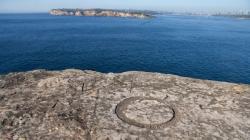 Sydney - Australians have been etching their thoughts on walls since Indigenous people began drawing on rocks and caves. Archaeologist Ursula Frederick, from the Australian National University, is one of a group of archaeologists collecting the evidence. She has an interest in contemporary graffiti, but has also spent time surveying graffiti at the former Quarantine Station at Sydney's North Head. The area was used between 1835 and 1984 as a medical facility for migrants and travellers who were suspected of carrying infectious diseases into Australia. There are more than 1,000 messages written in sandstone around its structures.
Sydney - Australians have been etching their thoughts on walls since Indigenous people began drawing on rocks and caves. Archaeologist Ursula Frederick, from the Australian National University, is one of a group of archaeologists collecting the evidence. She has an interest in contemporary graffiti, but has also spent time surveying graffiti at the former Quarantine Station at Sydney's North Head. The area was used between 1835 and 1984 as a medical facility for migrants and travellers who were suspected of carrying infectious diseases into Australia. There are more than 1,000 messages written in sandstone around its structures.
https://au.news.yahoo.com/a/24298876/digging-up-the-history-of-graffiti-in-australia/
USA – 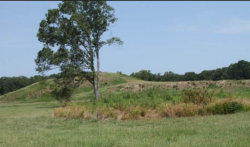 Poverty Point - Poverty Point on Sunday became Louisiana’s first World Heritage Site. Poverty Point State Historic Site, in Pioneer, West Carroll Parish, is a 400-acre complex of carefully engineered mounds and ridges more than 3,000 years old, according to a website for Louisiana State Parks. The site formed the largest earthworks in North America and took 5 million hours of labor to build, U.S. Sen. Mary Landrieu, D-La., said Sunday.Poverty Point is one of the keys to understanding a time period stretching from 2,000 B.C. to 500 B.C., Hawkins said. It is the largest known community in North America that lived without agriculture. It also may have been the largest community of that kind in the world, but documentation is too poor to know for sure, Hawkins said.
Poverty Point - Poverty Point on Sunday became Louisiana’s first World Heritage Site. Poverty Point State Historic Site, in Pioneer, West Carroll Parish, is a 400-acre complex of carefully engineered mounds and ridges more than 3,000 years old, according to a website for Louisiana State Parks. The site formed the largest earthworks in North America and took 5 million hours of labor to build, U.S. Sen. Mary Landrieu, D-La., said Sunday.Poverty Point is one of the keys to understanding a time period stretching from 2,000 B.C. to 500 B.C., Hawkins said. It is the largest known community in North America that lived without agriculture. It also may have been the largest community of that kind in the world, but documentation is too poor to know for sure, Hawkins said.
http://theadvocate.com/home/9533050-125/la-park-named-world-heritage
FRANCE – 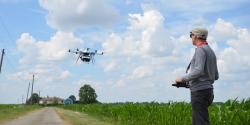 Castelsarrazin -Si les premiers coups de pioche sur le tracé de la LGV Bordeaux-Toulouse ne sont prévus qu’à l’horizon 2019, une équipe d’archéologues est d’ores et déjà à pied d’œuvre pour scruter le périmètre à l’aide d’un drone. A bord de ce drone a été placée une caméra thermique qui, pendant les huit minutes de vol, va photographier les champs de maïs de Castelsarrasin (Tarn-et-Garonne), à proximité du tracé de la future ligne à grande vitesse (LGV). Objectif : détecter la présence d’éventuels sites archéologiques enfouis et encore méconnus. "Des plantes qui poussent au-dessus de structures maçonnées, comme des murs, ont tendance à connaître un stress hydrique (lorsque la quantité d'eau transpirée par la plante est supérieure à la quantité qu'elle absorbe, ndlr) plus important que les autres", explique Nicolas Poirier, chargé de recherche CNRS à Toulouse et spécialiste en archéologie. Les céréales qui poussent sur les vestiges affichent une température plus élevées permettant aux capteurs thermiques de repérer les sites archéologiques. Aux commandes de l’archéodrone, il passe régulièrement en revue, depuis le mois de mars, le site de 50 hectares dont les limites ont été définies en début d’année. "Nous avons commencé par passer 10 jours sur le sol nu à ramasser du mobilier archéologique, comme des tessons de céramique ou des fragments de tuiles datant de l’âge de bronze mais aussi du Moyen-Age. Nous avons ainsi repéré plusieurs concentrations, ce qui peut signifier qu’il y avait auparavant des fermes ou des habitations", indique le chercheur.
Castelsarrazin -Si les premiers coups de pioche sur le tracé de la LGV Bordeaux-Toulouse ne sont prévus qu’à l’horizon 2019, une équipe d’archéologues est d’ores et déjà à pied d’œuvre pour scruter le périmètre à l’aide d’un drone. A bord de ce drone a été placée une caméra thermique qui, pendant les huit minutes de vol, va photographier les champs de maïs de Castelsarrasin (Tarn-et-Garonne), à proximité du tracé de la future ligne à grande vitesse (LGV). Objectif : détecter la présence d’éventuels sites archéologiques enfouis et encore méconnus. "Des plantes qui poussent au-dessus de structures maçonnées, comme des murs, ont tendance à connaître un stress hydrique (lorsque la quantité d'eau transpirée par la plante est supérieure à la quantité qu'elle absorbe, ndlr) plus important que les autres", explique Nicolas Poirier, chargé de recherche CNRS à Toulouse et spécialiste en archéologie. Les céréales qui poussent sur les vestiges affichent une température plus élevées permettant aux capteurs thermiques de repérer les sites archéologiques. Aux commandes de l’archéodrone, il passe régulièrement en revue, depuis le mois de mars, le site de 50 hectares dont les limites ont été définies en début d’année. "Nous avons commencé par passer 10 jours sur le sol nu à ramasser du mobilier archéologique, comme des tessons de céramique ou des fragments de tuiles datant de l’âge de bronze mais aussi du Moyen-Age. Nous avons ainsi repéré plusieurs concentrations, ce qui peut signifier qu’il y avait auparavant des fermes ou des habitations", indique le chercheur.
http://www.metronews.fr/toulouse/en-midi-pyrenees-le-trace-de-la-future-lgv-passe-au-crible-par-l-archeodrone/mnfv!gJY5AFHjlxFmc/